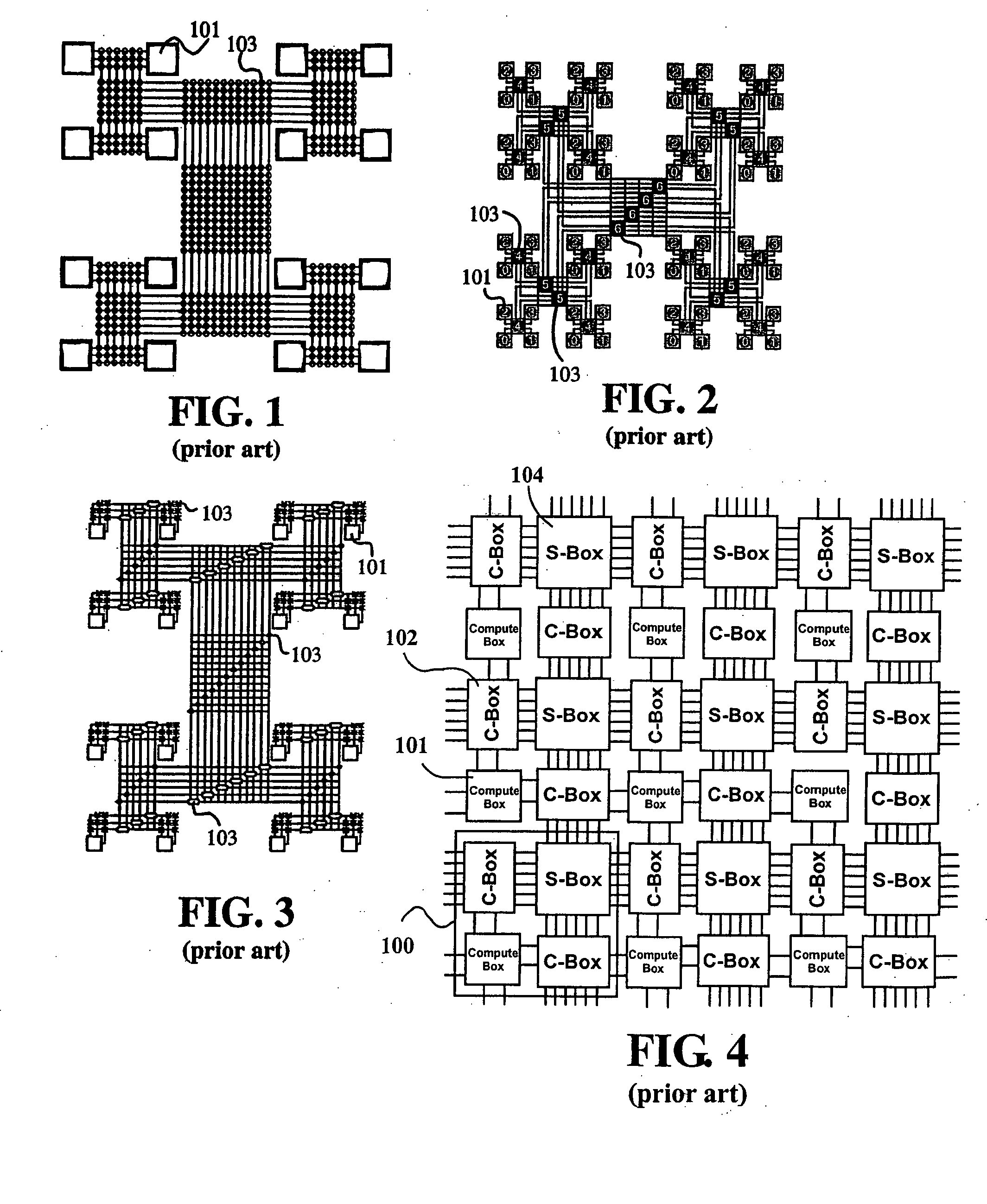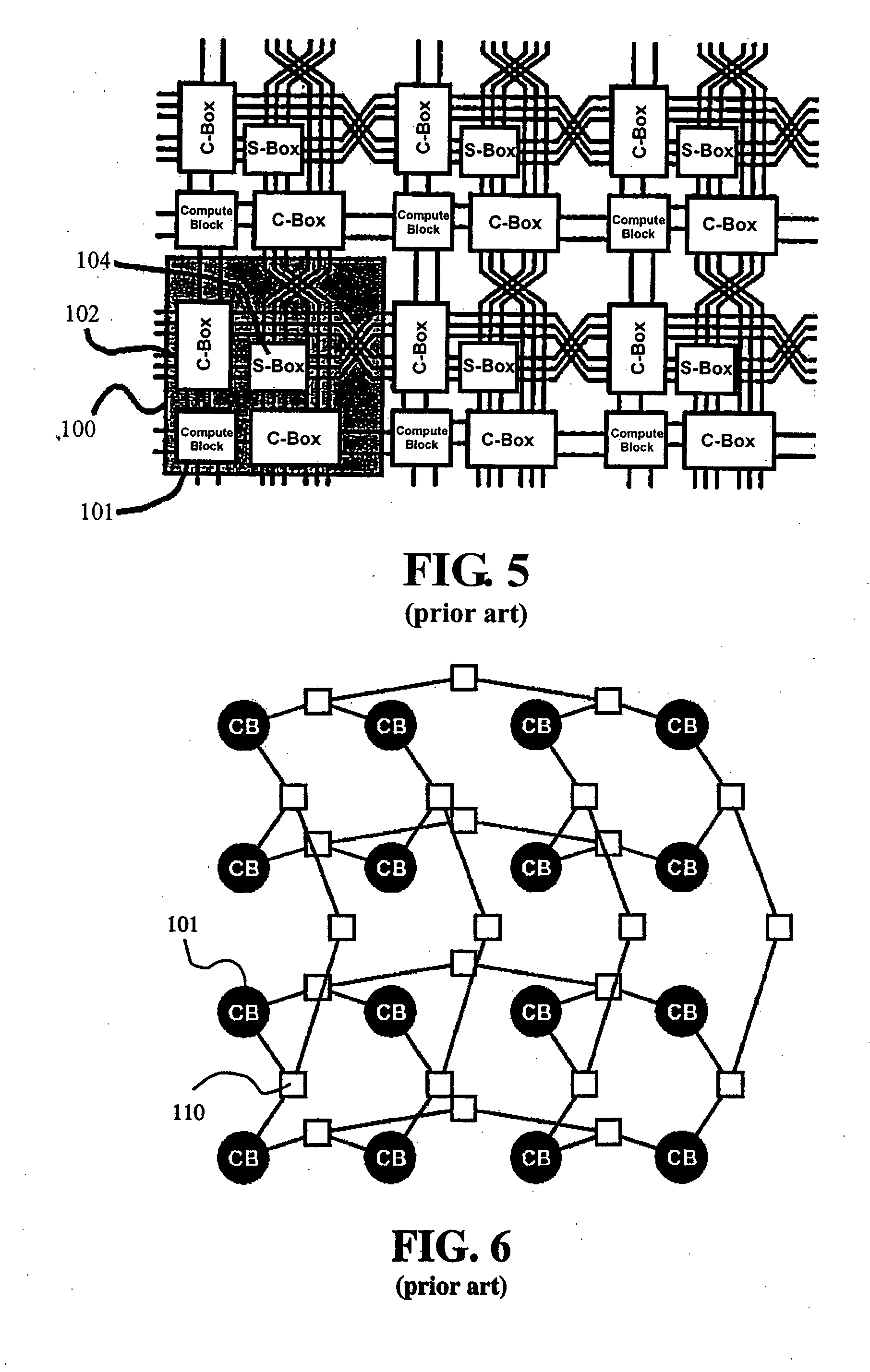Method and apparatus for network with multilayer metalization
a multi-layer metalization and network technology, applied in data switching networks, data switching networks, architectures with multiple processing units, etc., can solve the problems of not being able to evenly spread wires across all channels without increasing channel widths, superlinear growth of switching requirements with an increase in the number of compute blocks, and hierarchical scheme not eliminating asymptotic switch requirements. , to achieve the effect of fast and guaranteed routing
- Summary
- Abstract
- Description
- Claims
- Application Information
AI Technical Summary
Benefits of technology
Problems solved by technology
Method used
Image
Examples
Embodiment Construction
The present invention will now be described more fully hereinafter with reference to the accompanying drawings, in which preferred embodiments of the invention are shown. This invention may be embodied in many different forms and should not be construed as limited to the embodiments set forth herein. Further, the dimensions of layers and other elements shown in the accompanying drawings may be exaggerated to more clearly show details. The present invention should not be construed as being limited to the dimensional relations shown in the drawings, nor should the individual elements shown in the drawings be construed to be limited to the dimensions shown.
The asymptotic analysis presented above in regard to the Manhattan interconnection scheme indicates that it is necessary to bound the compute block connections to a constant if the total switches per compute block is to be contained to a constant independent of design size. Certain embodiments according to the present invention ma...
PUM
 Login to View More
Login to View More Abstract
Description
Claims
Application Information
 Login to View More
Login to View More - R&D
- Intellectual Property
- Life Sciences
- Materials
- Tech Scout
- Unparalleled Data Quality
- Higher Quality Content
- 60% Fewer Hallucinations
Browse by: Latest US Patents, China's latest patents, Technical Efficacy Thesaurus, Application Domain, Technology Topic, Popular Technical Reports.
© 2025 PatSnap. All rights reserved.Legal|Privacy policy|Modern Slavery Act Transparency Statement|Sitemap|About US| Contact US: help@patsnap.com



